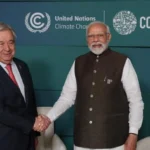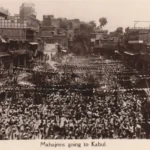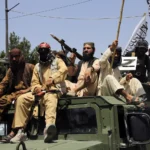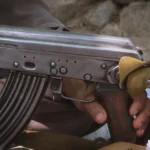From the Holocaust in Europe to the Rwandan and Bosnian genocides, world history records many brutal attempts to annihilate communities based on faith or ethnicity. Yet among these dark chapters, the Jammu Genocide of 1947 stands out as one of the most horrific and least discussed in the modern history of the world.
Under the Amritsar Treaty of 1846, the Dogra regime was established in Jammu and Kashmir; the rulers of this dynasty brutally oppressed the Muslim population of the state. The Jammu genocide was carried out during the regime of Maharaja Hari Singh, the last ruler of the Dogra dynasty in Jammu and Kashmir, with the involvement of Hindu extremist groups assisted by Dogra troops.
Pandit Praim Nath Bazaz, in his book “The History of Struggle for Freedom in Kashmir: Cultural and Political, from the Earliest Times to the Present Day,” quoted that “Muslims were treated harshly in Jammu and Kashmir in various respects simply because they were Muslims.”
Alastair Lamb, in his book “Kashmir: A Disputed Legacy, “cites that around 200,000 Muslims were killed and more than 200,000 Muslims were forced to migrate, leading to a drastic demographic transformation; the Muslim population proportion declined from 61% to 33%.”
Justice Yusaf Saraf, in his book “Kashmiris Fight for Freedom (1947-1978)”, provides a detailed account that approximately 25,000 Muslim women were abducted during the Jammu genocide. And many parents killed their daughters out of fear of the rape and dishonor during the Jammu genocide.”
The genocide aimed to eradicate the Muslim population from Jammu. This calculated attempt to alter the demography of the region makes it one of South Asia’s first organized ethnic cleansings. While the other genocides in the world have drawn global concern and condemnation, this bloodshed, in which more than 50% of the Muslim population was ethically eliminated, thousands of women were abducted, and people were forced to migrate, remains buried under the layers of denial and silence.
The systematic nature of killings, abductions, and forced migrations meets the United Nations’ definition of genocide, yet this event has been excluded from global memory and academic study. Other genocides are memorialized worldwide, but the Jammu Genocide remains the least discussed. The post-Independence governments of India have actively suppressed discussions of this event by manipulating archives, excluding it from textbooks,and silencing the narrative of the survivors.
This deliberate erasure mirrors the state-sponsored denial observed in cases of the Armenian and the Srebrenica massacre, where truth itself became the final casualty. The silence surrounding Jammu is not accidental; it is political, meant to conceal the origins of a demographic strategy that continues in Indian-Illegally Occupied Jammu and Kashmir (IIOJK) today.
After 77 years, the pattern of demographic engineering continues in Kashmir because they have eliminated Muslims from the Jammu region and made it a Hindu-majority or Hindu-dominated area, which was their aim.
What the Indian government is doing in the Kashmir region amounts to identity genocide. The Indian government has left no stone unturned in devastating the people of Kashmir. It has launched systematic policies aimed at changing the socio-political and cultural identity of the region. Following the revocation of Article 370 in 2019, the Indian government accelerated settlement projects, allowing the non-native population, primarily Hindus, to acquire land in the state.
So-called development projects have brought destruction to Kashmir’s land and environment. Moreover, the government is altering the script of the Kashmiri language and censoring socio-political, cultural, and religious literature to disconnect the Kashmiri from their historical and cultural roots. The same objectives that motivated the Jammu Genocide, erasing Muslim presence and suppressing Kashmiri identity, are being pursued through new political and legal mechanisms.
The world has given so much attention to the American 9/11, but forgets the Kashmiris 6/11 where the death toll of innocent Kashmiris was 80 times higher. As the world honors victims of other genocides, it must also acknowledge the Jammu genocide and honor the countless sacrifices of the Muslims who were martyred. The world must highlight this to preserve the historic integrity. The same tactics are being used in the Kashmir Valley, just as they were in Jammu, where the Muslim population was wiped out. Today, the Indian forces are not only killing Muslims but also attempting an identity genocide aimed at erasing Kashmir’s identity. Because now the socio-political and cultural history of the people of the valley is being rewritten under the Hindutva agenda, by those who have always sought to erase it and suppress the truth.
The occupational forces are erasing the history, culture, and traditions that collectively form Kashmiriyat in the region. The fate of the people of Jammu and Kashmir lies on the table of the United Nations, through its resolutions on the conflict. The sacrifices made by the people of Jammu and Kashmir, who laid down their lives, must be honored. Their identity should be protected by implementing the UN resolutions that grant the people of the state of Jammu and Kashmir the right to self-determination, the right to decide their own future through an impartial plebiscite under United Nations supervision.
The views expressed in this article are the author’s own. They do not necessarily reflect the editorial policy of the South Asia Times.







